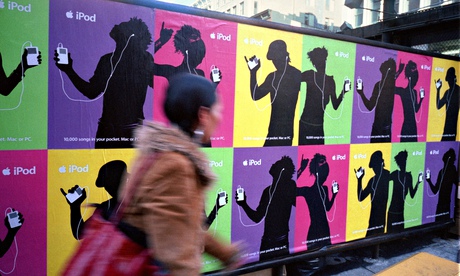
One of this year’s hottest Christmas presents is no longer available in the shops. Two months after Apple announced the demise of its iPod Classic MP3 player, the model is selling secondhand for up to four times its original price as aficionados clamour to get their hands on one.
With a storage capacity double the size of any current iPods still being made, versions of the 160GB Classic – which can hold around 40,000 songs – are being sold as new via Amazon for up to £670. More than 3,000 of the models – the seventh, final version came out in 2010 – have been sold on eBay since the Classic was retired in October, most for between £350 and £500.Even refurbished older models now cost far more than the £229 for which the later generations retailed.
After Apple quietly pulled the Classic from its website, chief executive Tim Cook said the company no longer had access to the components and a redesign would have been too demanding.
As long ago as January 2013, Stuff magazine recommended buying an iPod Classic before it was too late, predicting it would double in price as soon it went into retirement. Editor Will Dunn lamented the product’s demise: “There’s still a huge affection for the iPod Classic and it’s not hard to see why – Spotify might offer 20 million songs, but 120GB of music is more than most people need, and your iTunes library doesn’t carry data charges or a subscription fee. Also, I think the Classic is a more distraction-free listening experience – I’m more likely to get through a full album on one.”
The iPod Touch has taken the Classic’s place as the Apple product with the biggest capacity, albeit only up to half of what used to be readily available. Dunn said he could not see the company making the Classic again, but another firm could step into the gap. “The iPod’s days have been numbered since the first iPhone, and the subscription model shows no signs of slowing down. Apple itself is transitioning into music subscriptions with iTunes Radio, and Google has just started trialling YouTube Music Key,” said Dunn.
“Another company could make something equally good – there are some nice premium players like Sony’s ZX1 and the Astell & Kern devices – but I don’t think I’d buy one. I have a smartphone that takes 128GB microSD cards; there are apps like doubleTwist that sync iTunes with Android and I have enough things in my pockets already.”
However, not everyone has been happy with their secondhand purchases. After buying one last week on Amazon and giving it a one-star review, Ian Murray said: “Rubbish company advertised as grade B – it was scratched, dented and screen had lines through it. It was only fit for the bin.”
The iPod Classic is not the first retro gadget to be surging in popularity again . Anna Wintour, editor-in-chief of American Vogue was spotted at the US Open tennis tournament this year clasping a flip phone of the type seldom seen since around a decade ago. Rihanna has also returned to using a pre-smartphone era handset, while Iggy Pop recently confessed he owned a clamshell phone.
Versions of the Nokia 8210, epitomising an era when consumers wanted the smallest phone possible, are also ballooning in price in the secondhand market. Similar-sized Ericsson and Motorola phones are on retro websites for hundreds of pounds.
Djassem Haddad, who started the site vintagemobile.fr in 2009, said: “Some people don’t blink at the prices. The high prices are due to the difficulty in finding models which were limited editions in their time.” A Nokia 8800 Arte Gold was recently listed on his site for £810, while a Nokia 8800 could be bought for a more affordable £200.
Haddad had been hoping to explore what he believed to be a niche market, but since last year sales have taken off, partly due to older handsets being more secure – as they do not connect to a cloud network, they cannot be hacked into so easily.

